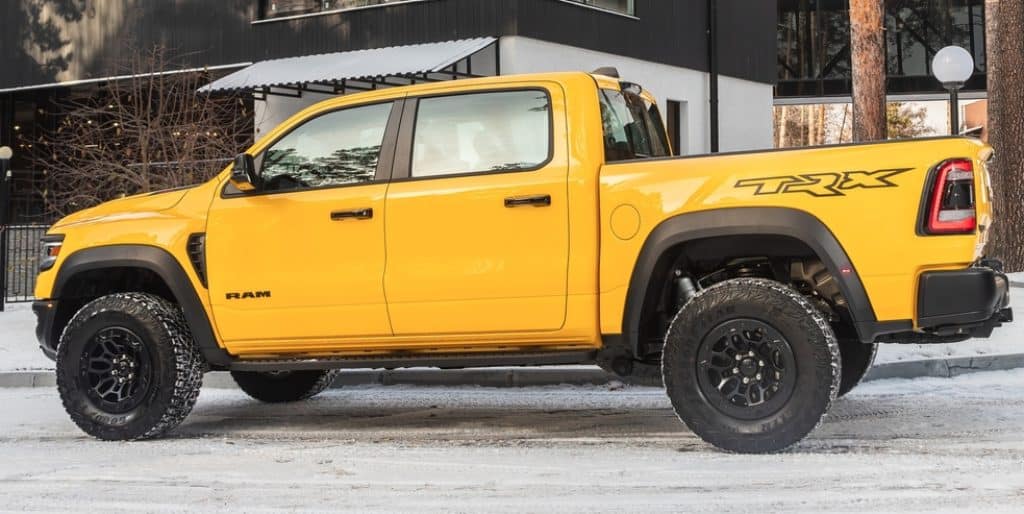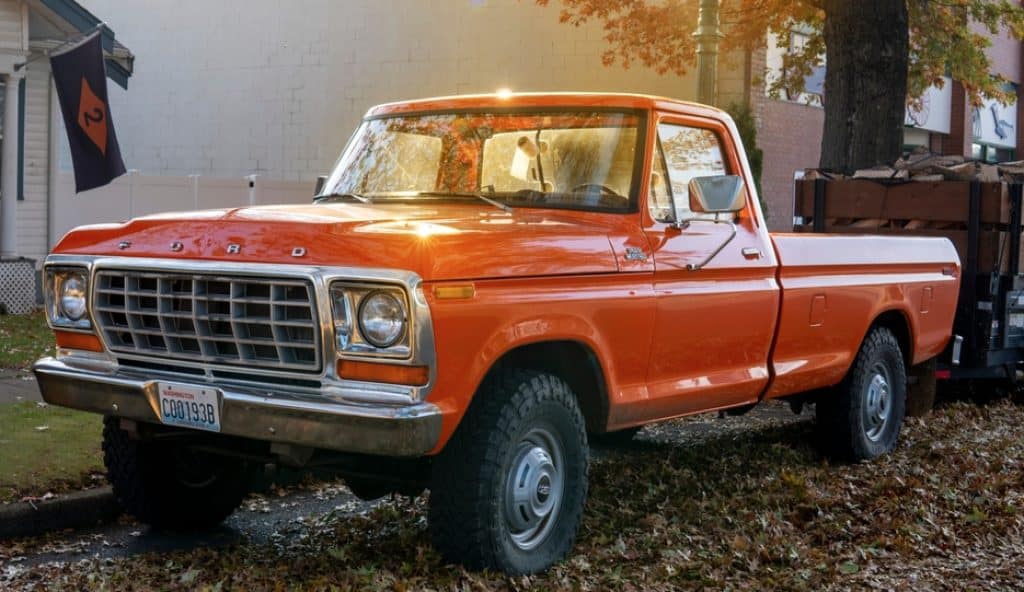Lifting a truck is one of the most common mods that a new truck owner makes. While the price range can vary greatly, it is relatively affordable (in relation to the truck’s cost).
The cost to lift a truck can vary widely based on several factors, including the type of lift kit, the make and model of the truck, the height of the lift, and whether you’re doing it yourself or hiring a professional. Here’s a general overview of the costs:

- Leveling Kits: Starting at $100 to $500 for the kit alone. These kits are generally less expensive and can raise the truck by 1 to 2 inches, primarily used to level the front of the truck with the back.
- Body Lift Kits: Ranging from $100 to $1,000 for the kit. Body lifts raise the body of the truck 1 to 3 inches above the frame, using spacers or blocks, and do not alter the suspension. Installation, if not DIY, can add $200 to $800 to the total cost.
- Suspension Lift Kits: Prices range from $300 to over $2,000 for the kit, with more comprehensive kits being on the higher end. These kits can lift a truck by 2 to 9 inches or more, improving ground clearance and off-road capability. Professional installation can significantly increase the cost, ranging from $400 to $2,000, depending on the complexity of the kit and labor rates.
- Comprehensive Lifts and Custom Work: For custom lifts or lifts higher than 6 inches, costs can exceed $2,000 to $4,000+, especially when including upgraded shocks, struts, and other suspension components. Professional installation is recommended and can be substantial.
Additional Costs:
- Alignment: After lifting a truck, an alignment is usually necessary, which can cost $100 to $150.
- Other Modifications: Larger tires, upgraded brakes, or drivetrain adjustments may be needed, increasing the overall cost.
- Warranty and Insurance: Modifications can affect the vehicle’s warranty and insurance premiums, so check with your provider.
DIY installations can save on labor costs but require mechanical knowledge and proper tools. Always consider the total cost, including any additional modifications and the potential impact on the truck’s handling, warranty, and insurance, when planning a lift.
Is Lifting a Truck at Home Doable for a Shadetree Mechanic?
Most folks can lift a truck at home. A YouTube video of someone already doing it is worth it’s weight in gold, though.

Here’s what to expect/what you need if you do it at home.
- Mechanical Skill Level: You should have a good understanding of your vehicle’s suspension system and be comfortable with using tools and equipment like jack stands and hydraulic jacks. If you’ve performed similar mechanical work before, lifting your truck could be within your capabilities.
- Tools and Equipment: You’ll need the right tools for the job, which can include wrenches, sockets, a torque wrench, jack stands, a hydraulic jack, and possibly a spring compressor for certain types of lifts. Make sure you have, or can borrow or rent, all the necessary equipment.
- Quality Lift Kit: Invest in a high-quality lift kit that is compatible with your truck. The kit should come with a detailed instruction manual. Research and choose a kit that fits your specific needs and budget.
- Preparation and Research: Thoroughly read the lift kit’s installation instructions before starting. Watching tutorial videos and reading forums where others share their experiences with lifting the same model of truck can provide valuable insights.
- Safety: Ensure you work in a safe, well-lit area and use jack stands to securely support the vehicle. Never work under a vehicle only supported by a jack.
- Time Commitment: Depending on the type of lift and your experience level, the project can take a full day or even a weekend. Don’t rush—take your time to ensure everything is done correctly.
- Helping Hands: Some steps might require an extra set of hands. Having a friend or family member assist you can make the process smoother and safer.
- Post-Installation: After installing the lift, it’s crucial to have the truck’s alignment checked and adjusted as necessary. This ensures proper handling and prevents uneven tire wear.
There is Some Sacrifice Involved With Lifting a Truck
Before you buy a case of Pepsi and send the kids away for the weekend, there is some tradeoff to lifting your truck:
Pros:
- Improved Off-Road Performance: Lifting your truck can significantly enhance its off-road capabilities. With increased ground clearance, you’ll be able to tackle rougher terrain and larger obstacles without worrying about damaging the underside of your vehicle.
- Aesthetic Appeal: There’s no denying that a lifted truck has a commanding presence and can turn heads. If you’re aiming for a more aggressive and customized look, lifting your truck can achieve that.
- Better Visibility: Sitting higher in a lifted truck gives you a better view of the road ahead, which can be advantageous in traffic and while navigating challenging trails.
- Accommodate Larger Tires: Lifting your truck allows you to fit larger tires, which not only contribute to the truck’s appearance but can also improve traction and handling, especially on off-road adventures.
Cons:
- Reduced Fuel Efficiency: The increased wind resistance from lifting your truck (and potentially adding larger tires) can lead to a decrease in fuel efficiency. Be prepared for more frequent trips to the gas station.
- Altered Handling: Lifting a truck changes its center of gravity, which can affect handling. You might notice that your truck feels different when turning or in windy conditions. It’s something you’ll need to adjust to, for safety.
- Increased Wear on Components: Lifting a truck puts more strain on various components, including the suspension, brakes, and drivetrain. This can lead to more frequent repairs and maintenance.
- Accessibility: A lifted truck can be harder to enter and exit, which might be inconvenient for daily use, especially for passengers who are shorter or have mobility issues.
- Insurance and Warranty Considerations: Some modifications, including lifting, can affect your truck’s warranty and insurance. Check with your providers to understand any potential impacts or increased costs.
Did we talk you out of it? I didn’t think so. Good luck!
